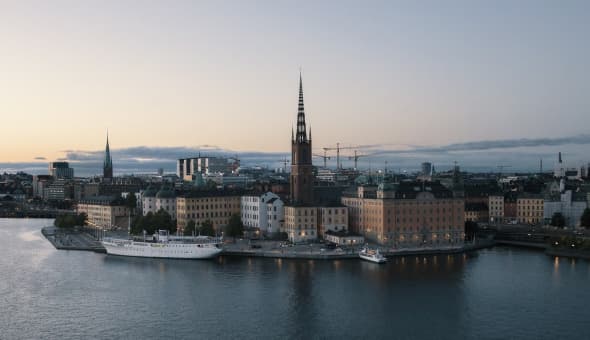Gender Quotas Database

Denmark
Northern Europe
At a glance
| Structure of parliament | Unicameral |
Are there legislated quotas
Are there voluntary quotas?
| Is there additional information? | Yes |
Single / Lower House
Folketinget / Parliament
| Total seats | 179 |
| Total women | 71 |
| Percentage of women | 40% |
| Gender Quota target | |
| Election year | 2019 |
| Electoral system | List PR |
| Quota type | |
| Election details | IDEA Voter Turnout - IPU Parline |
Voluntary Political Party Quotas*
| Party | Official Name | Details, Quota provisions |
|---|---|---|
| No data available. | ||
* Only political parties represented in parliament are included. When a country has legislated quotas in place, only political parties that have voluntary quotas that exceed the percentage/number of the national quota legislation are presented in this table.
Additional information
Sources
-Additional reading
-
Borchorst, A. and Christensen, A.D. 2003. ‘Könskvotering i SF og i forskerstillinger
– diskursiv praksis og forändring’, in A. Borchorst and D. Dahlerup (eds) Ligestillingspolitik som diskurs og praksis, Frederiksberg: Samfundslitteratur, pp.
101–23. -
Borchorst, A. and Dahlerup, D. (eds) 2003. Ligestillingspolitik som diskurs og praksis,
Frederiksberg: Samfundslitteratur. - Christensen, Ann-Dorte. 2003. ‘Kønskvotering i SF og i forskerstillinger – diskursiv praksis og forandring’, in Borchorst, Anette and Drude Dahleru: Ligestillingspolitik som diskurs og praksis. Samfundslitteratur. pp.101-123.
- Togeby, L. 2003. Fra fremmedarbejdere til etniske minoriteter, Aarhus: Aarhus University Press.
- Togeby, L., Andersen, J.G., Munk Christiansen, P., Jørgensen, T.B. and Vallgårda, S. 2003. Magt og demokrati i Danmark. Hovedresultater fra Magtudredningen, Aarhus: Aarhus University Press.
- Borchhorst, Anette et al. 2002. Könsmagt under forandring. Köpenhamn: Hans Reitzels Forlag.
- Narud, H.M., Pedersen, M.N. and Valen, H. (eds) 2002. Party Sovereignty and Citizen Control. Selecting Candidates for Parliamentary Elections in Denmark, Finland, Iceland and Norway, Odense: University Press of Southern Denmark.
-
Dahlerup, Drude and Kristian Hvidt. 1990. Kvinder på Tinge. Rosinante and Folketinget.
Siim, Birte. 2000. Gender and Citizenship: Politics and Agency in France, Britain, and Denmark. New York: Cambridge University Press. - Kjær, U. 2000. ‘Saturation without parity: The stagnating number of female councillors in Denmark’, in N. Rao (ed.) Representation and Community in Western Democracies, Houndmills: MacMillan, pp. 149–66.
- Bergqvist, Christina. (ed.). 1999. Equal Democracies? Gender and Politics in the Nordic Countries. Oslo: Scandinavian Universities and the Nordic Council of Ministers.
- Christensen, Ann-Dorte. 1999. ‘Kvinder i de politiske partier’. Bergquist et al, Likestilte demokratier? Kjönn og politikk i Norden.
- Christensen, Ann-Dorte and Poul Knopp Damkjær. 1998. Kvinder og politisk repræsentation i Danmark (Women and political representation in Denmark). Aalborg: FREIA.
- Dahlerup, D. 1998. Rødstrømperne. Den danske Rødstrømpebevægelses udvikling, nytænkning og gennemslag, Vol. I–II, Copenhagen: Gyldendal.
- Dahlerup, Drude. 1998b. ‘Using Quotas to Increase Women’s Political Representation’ in Azza Karam. Women in Parliament: Beyond Numbers. Stockholm: International IDEA.
- Dahl, H.M. et al. 1989. Hvorfor stiger kvinderepræsentationen? En analyse af folketingsvalget i september 1987, University of Aarhus: Department of Political Science.
- Dahlerup, Drude, 1988a. ‘From a Small to a Large Minority: Women in Scandinavian Politics’ Scandinavian Political Studies. Vol.11, No 4, pp. 275-298.
- Danish Parliament website, http://www.folketinget.dk/
Explore more resources: Europe | Global
Know about useful additional reading for Denmark? Tell us!
Submit feedback
Submit questions or comments about the Data or Tool
How did you find out about this? What do you like about it? What did you expect but did not find in using the Data or Tool?
To see how we handle your personal data, please read our Privacy Policy.
